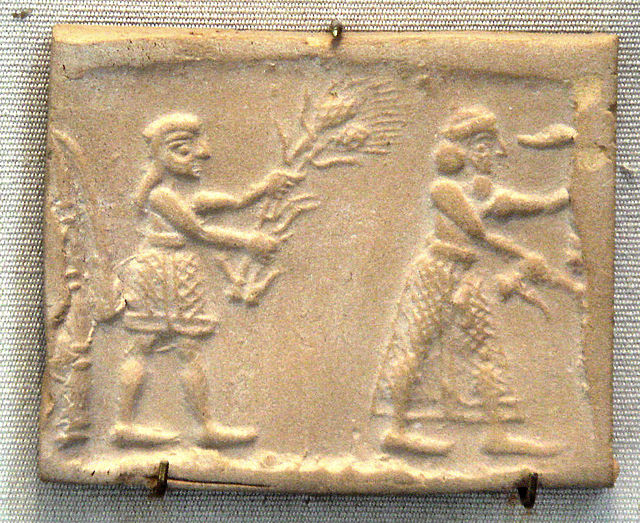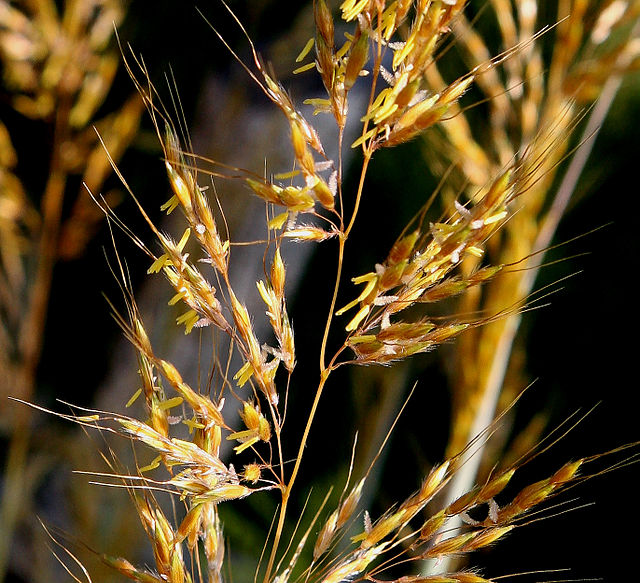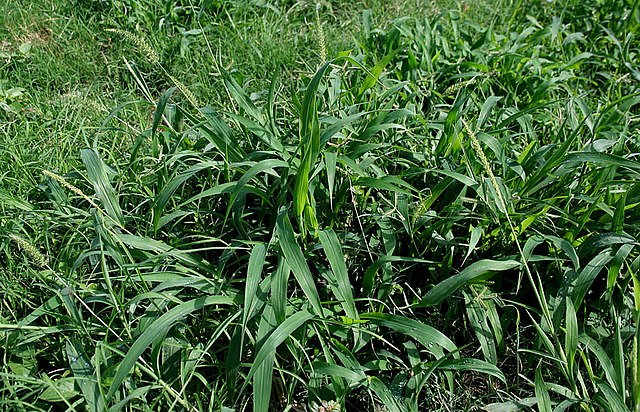Wheat is a grass widely cultivated for its seed, a cereal grain that is a worldwide staple food. The many species of wheat together make up the genus Triticum ; the most widely grown is common wheat. The archaeological record suggests that wheat was first cultivated in the regions of the Fertile Crescent around 9600 BC. Botanically, the wheat kernel is a caryopsis, a type of fruit.
Wheat
A: Plant; B ripe ear of corn; 1 spikelet before flowering; 2 the same, flowering and spread, enlarged; 3 flowers with glumes; 4 stamens 5 pollen; 6 and 7 ovaries with juice scales; 8 and 9 parts of the scar; 10 fruit husks; 11, 12, 13 seeds, natural size and enlarged; 14 the same cut up, enlarged.
Sickles with stone microblades were used to harvest wheat in the Neolithic period, c. 8500–4000 BC
Sumerian cylinder seal impression dating to c. 3200 BC showing an ensi and his acolyte feeding a sacred herd wheat stalks; Ninurta was an agricultural deity and, in a poem known as the "Sumerian Georgica", he offers detailed advice on farming
Poaceae or Gramineae is a large and nearly ubiquitous family of monocotyledonous flowering plants commonly known as grasses. It includes the cereal grasses, bamboos, the grasses of natural grassland and species cultivated in lawns and pasture. The latter are commonly referred to collectively as grass.
Poaceae
Grass flowers
Drawing of Anomochloa marantoidea, one of the most primitive living grass species
Setaria verticillata from Panicoideae








